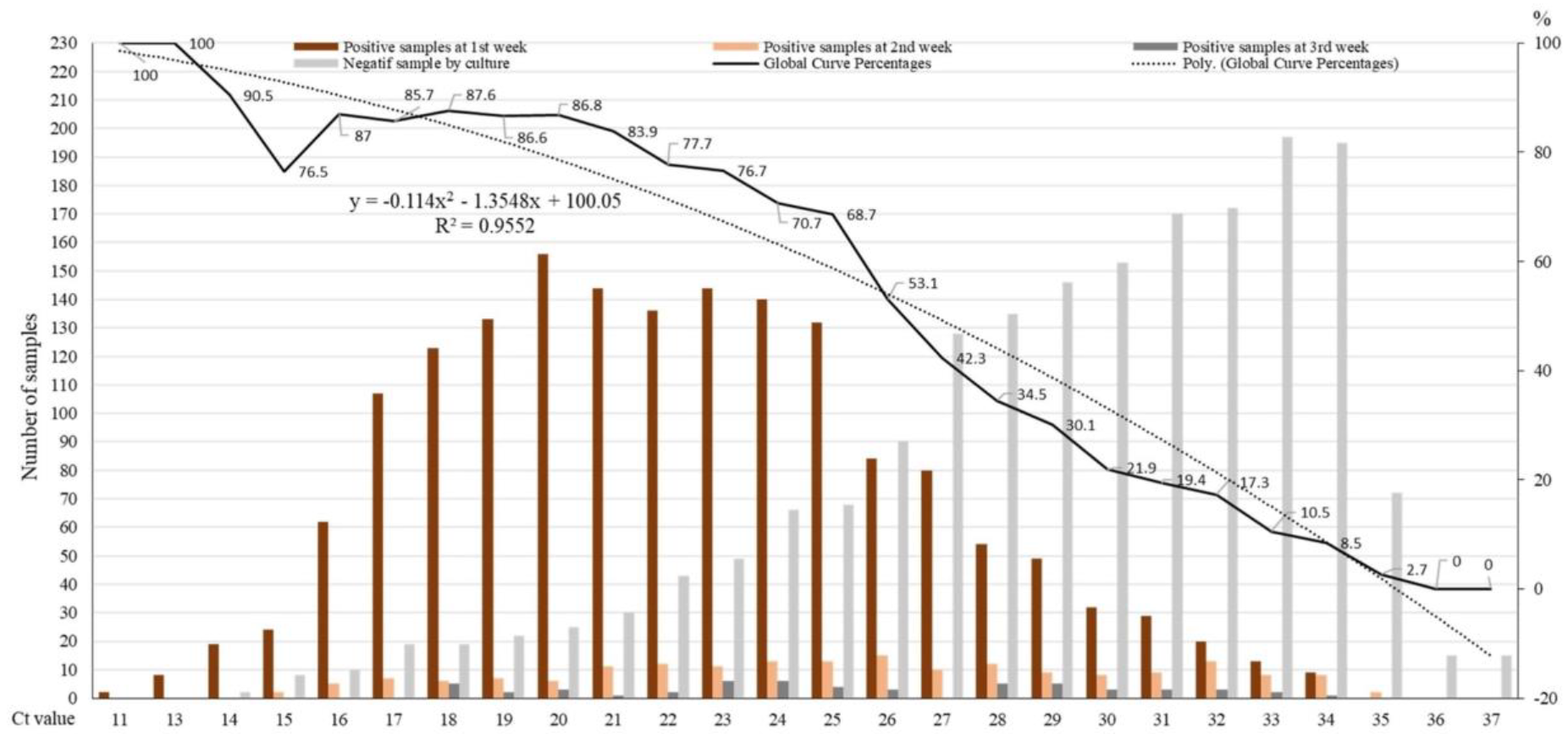On PCR Cycle Thresholds In Canada (EAL Exclusive)
This is a synopsis of some research conducted in early January, 2021. Why is this important? Because there is definitive evidence that the tests used to “diagnose” COVID19 are producing far too many false positives, and this is being used politically to justify lockdown measures.
The critical factor affecting false-positive PCR tests is the number amplifications cycles that laboratories use. Also called the “Cycle Threshold” (or Ct), it is widely documented in the scientific literature that any Ct over 35 produces a very high (>90%) false positive result, meaning that practically any protein or fragment can amplify to produce a positive result. Experts receommend that Ct thresholds of 25 or lower can provide a meaningful result, but virtually no labs in Canada are using that protocol.

At 35 cycles, more than 97% of tests that are “positve” are false cases. Source: Swiss Policy Research
This analysis and summary is ongoing and will be updated as new information becomes publicly available.
Initial Findings:
- The Federal health bodies (like CPHA) do not seem to set the Ct values. This is in line with the jurisdiction of medical practices, i.e., this is a provincial matter, and therefore there is no common threshold among the provinces.
- None of the provinces are forthcoming with the labs’ practices publicly, although some data was obtained through journalistic research.
- In Alberta, there is some evidence that ProvLab is specifying 35 Cycles for their assay.
- It is probable that none of AHS labs are recording the Ct value, as none of the protocol documents publicly available diclose an requirement for it to be recorded, however it should be possible to FOIA that guideline from AHS or ProvLab. As this in an ongoing investigations, this would be best tackled by someone trained in journalism or law.
References
Canadian (National) guidelines say nothing about Cycle thresholds, but clearly state that asymptomatic testing is in experimental phase (which is now debunked with the recent 10M people study in Nature.)
https://www.canada.ca/en/public-health/services/diseases/2019-novel-coronavirus-infection/guidance-documents/national-laboratory-testing-indication.html
https://www.canada.ca/en/public-health/services/diseases/2019-novel-coronavirus-infection/guidance-documents/national-laboratory-testing-indication.html
Ontario publication. There is no hard limit, only guidelines and ranges. Leaves much open to interpretation.
https://www.publichealthontario.ca/-/media/documents/ncov/main/2020/09/cycle-threshold-values-sars-cov2-pcr.pdf?la=en
https://www.publichealthontario.ca/-/media/documents/ncov/main/2020/09/cycle-threshold-values-sars-cov2-pcr.pdf?la=en
Journalist uncovers evidence of PCR test fraud in ON, documents phone calls.
https://divergemedia.ca/2020/11/03/bombshell-ontario-runs-pcr-tests-at-fraudulent-amplification-levels/
https://divergemedia.ca/2020/11/03/bombshell-ontario-runs-pcr-tests-at-fraudulent-amplification-levels/
Alberta Advisory group is also vague when in comes to defining Ct. Page 6 of this documents skirts some values. This paper is squarely based on defining protocols for asymptomatic transmission, which has been proven to be a false assumption.
https://www.albertahealthservices.ca/assets/info/ppih/if-ppih-covid-19-sag-asymptomatic-transmission-rapid-review.pdf
https://www.albertahealthservices.ca/assets/info/ppih/if-ppih-covid-19-sag-asymptomatic-transmission-rapid-review.pdf
BC Medical board is also non-spectific about cycle threshold.
https://www.bccdc.ca/health-professionals/clinical-resources/case-definitions/covid-19-(novel-coronavirus)/covid-19-(novel-coronavirus)
https://www.bccdc.ca/health-professionals/clinical-resources/case-definitions/covid-19-(novel-coronavirus)/covid-19-(novel-coronavirus)
MB has the virtually the same guidelines as BC, no cycle thresholds listed.
https://www.gov.mb.ca/health/publichealth/surveillance/covid-19/resources/Notes.html
https://www.gov.mb.ca/health/publichealth/surveillance/covid-19/resources/Notes.html
Alberta page says “30 cycles or more”:
https://myhealth.alberta.ca/health/pages/conditions.aspx?hwid=zd1518&lang=en-ca“
https://myhealth.alberta.ca/health/pages/conditions.aspx?hwid=zd1518&lang=en-ca“
In Canada, most labs set the limit of cycles to detect the virus’ genetic material, or RNA, to between 35 and 40 cycles, though some Ontario labs have “positivity” cut-offs as high as 45 cycles, according to a study first flagged by Westphalian Times. Mina, a physician and epidemiologist, thinks the cut-off should be closer to 30. (The number of cycles to detect RNA is known as the cycle threshold, or CT value.)”
https://www.theguardian.pe.ca/lifestyles/health/when-is-a-case-of-covid-still-covid-critics-suggest-the-gold-standard-of-testing-could-be-too-sensitive-505061/
https://www.theguardian.pe.ca/lifestyles/health/when-is-a-case-of-covid-still-covid-critics-suggest-the-gold-standard-of-testing-could-be-too-sensitive-505061/
As of July, 35 Cycles was the current standard for Alberta being used by ProvLab (the body that conducts the testing):
https://www.sciencedirect.com/science/article/pii/S138665322030175X
https://www.sciencedirect.com/science/article/pii/S138665322030175X
Good article in Westphalian Times and source of the above link:
https://westphaliantimes.com/international-experts-suggest-that-up-to-90-of-canadian-covid-cases-could-be-false-positives/
https://westphaliantimes.com/international-experts-suggest-that-up-to-90-of-canadian-covid-cases-could-be-false-positives/
A useful link on guidelines for labs to adhere to for reliable testing:
https://labtestsonline.org/articles/laboratory-test-reliability
https://labtestsonline.org/articles/laboratory-test-reliability
